
views
Vacuum your home.
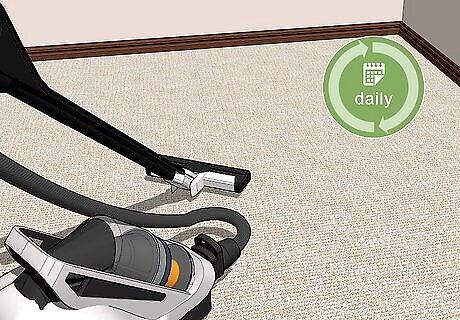
Vacuuming daily traps and eliminates fleas at all stages of life. A vacuum with a spinning brush works best to remove fleas. Run your vacuum through your entire home, but give a little extra focus on any areas where you can see “flea dust,” which are small black specks of flea waste. Try to get into all the nooks and crevices in your home using a narrow hose or brush attachment. Then, use a brush attachment on any upholstered furniture. If you have a pet, vacuum anywhere it has access. For example, if a cat likes to climb and hide on a bookshelf, vacuum the shelves. Try to vacuum at least once daily while you actively have fleas so you can control them the best. As soon as you finish vacuuming, remove the bag and throw it away outside to prevent any fleas from escaping.
Steam-clean carpets and furniture.
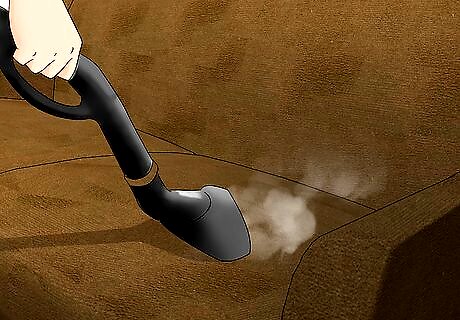
Steam penetrates fabric and upholstery and destroys eggs. Fleas can lay up to 40–50 eggs every day, which can turn into a real problem if you don’t kill them. You can rent a steamer from a hardware store or you can call a professional steaming service. Run the steamer over areas where any pets have access or where you notice flea dust. The heat from your steamer gets rid of any flea eggs and larvae deep in the fibers that vacuums might not reach. Try to steam any carpets or upholstery at least once a week. Test your steamer on a small section of carpeting or upholstery to ensure it doesn’t cause any discoloration.
Wash bedding in hot water.
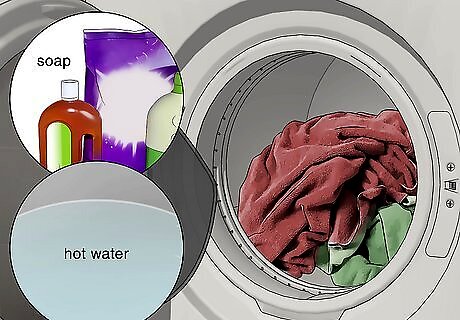
The heat and soap get rid of any fleas living in the fabric. Take off any blankets, bedding, or upholstery covers and put them in your washer. Run them on the hottest heat setting with your regular detergent. Then, use the hottest dryer setting the fabrics can tolerate to ensure none of the fleas survive. Aim to wash bedding at least once a week. If you have a pet, wash their bedding and any stuffed toys they play with as well.
Spot-treat your home with insecticide spray.
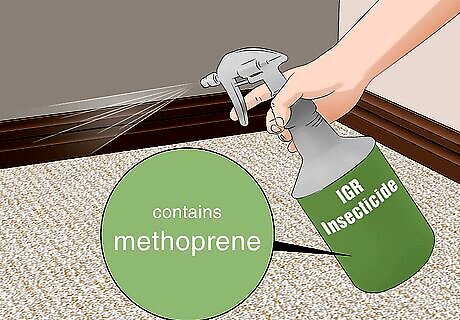
Spray an insect growth regulator to control flea larvae. Look for insect growth regulator (IGR) insecticides that contain methoprene or pyriproxyfen since they’re the most effective. Rather than treating your entire carpet, you can easily just spot-treat the affected areas. Common problem spots to focus on in your home include corners, baseboard seams, as well as behind and underneath furniture. Hold the IGR spray about 18 inches (46 cm) from the ground and apply it evenly back and forth. IGRs affect young fleas so they don’t fully mature, which causes them to die off quickly. They usually last around 2–6 months. IGRs are safe to use around pets and children.
Set up some flea traps.

Leave traps in flea hot spots to attract and exterminate them. Fill a shallow dish with some soapy water and set it underneath a lamp with an incandescent bulb. The fleas will get attracted to the heat and light, so they’ll jump in the soapy water and drown. Instead of a lamp, you can instead float a smaller dish in the water and set a lit tea light candle on it to attract fleas. You can also try commercial flea traps that have built-in lights or glue pads that trap fleas.
Apply essential oils to problem areas.
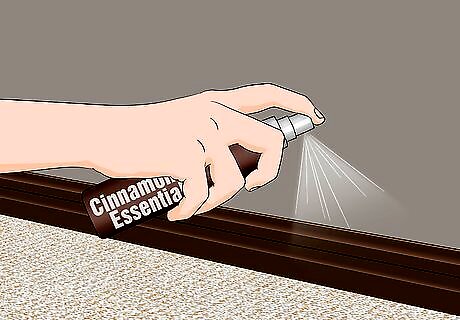
Spray cinnamon or clove oil for a natural solution that’s toxic to fleas. You can buy essential oils from your local pharmacy or online. Cinnamon and clove basil are the most effective at getting rid of fleas, but lemon, lavender, and cedar may also work. Just apply a few drops of essential oil without diluting it near problem areas and the fleas will die when they come into contact with it. Avoid using essential oils on or around your pets since they could be toxic and cause severe reactions. The essential oils are safe to use around children. Test the essential oils on an inconspicuous spot first to make sure it doesn’t cause any damage to the surface. Essential oils may also work to repel fleas as well.
Sprinkle diatomaceous earth in corners.
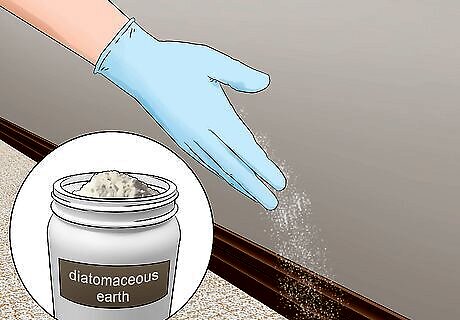
Fleas dry out and die when they’re exposed to diatomaceous earth. You can buy diatomaceous earth (DE) from your local garden store. Take a pinch of DE and apply it in the corners of your room and along the baseboards. You can also sprinkle it around furniture or areas where your pet sleeps. Diatomaceous earth works by cutting the flea’s exoskeleton and causing them to dehydrate.
Comb your pet with a flea comb.
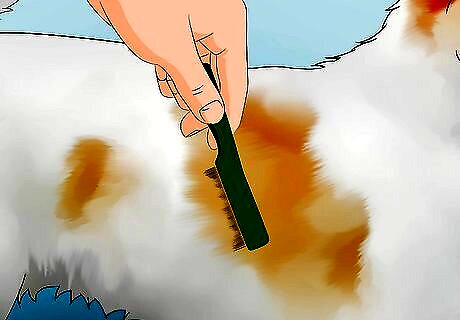
Fine-toothed combs help pull up to 60% of fleas off of your pet. Buy a comb specifically made to get rid of fleas from a pet store. Push the comb’s teeth into your pet’s fur and against its skin. Slowly run the comb through your pet’s fur and check the teeth. If you see any black fleas on the comb, dip the teeth in a bowl of soapy water to remove them. The most common problem areas on pets include the back of the neck and the area around the base of the tail.
Bathe your pets with warm, soapy water.
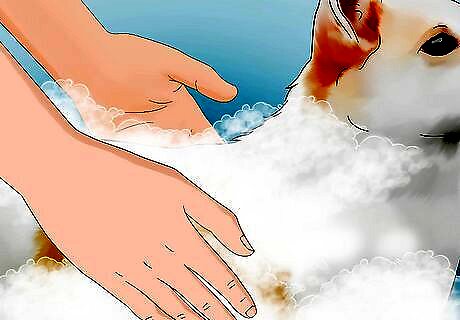
Hot water and soap drown fleas deep in your pet’s fur. You can use any standard pet shampoo, but you can also buy specially-formulated flea shampoo with mild insecticides. Get your pet in the tub and rinse them with some warm water before working the shampoo deep into their fur. Try to work it all the way down to the skin to get rid of the most fleas. Washing your pets also removes skin flakes and dried blood that young fleas feed on, so it’s a good preventative measure. Try to wash your pet at least once a week while you have fleas in your home.
Get a flea prescription for your pet.
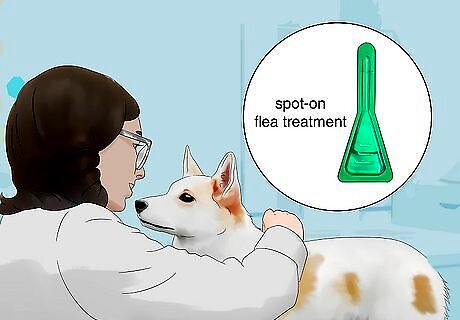
Medications help get rid of fleas and prevent new ones from hatching. Call your vet as soon as you know your pet has fleas to find out the best treatment option. They may prescribe an oral or topical medication that helps get rid of fleas and prevents larvae from growing. Follow your vet’s instructions to ensure you eliminate all of the fleas. Most commonly, you’ll get a “spot-on” treatment where you apply a topical medication to the back of your pet’s neck so they aren’t able to reach or lick it. Try to keep your pet separate from other animals and in a single room so it doesn’t spread fleas around your home.
Keep your lawn mowed and clear of debris.

Fleas won’t have anywhere to live if you keep your yard clean. Rake through your yard to get rid of any dead grass or debris where fleas might live. Pay extra attention to anywhere your pets sleep or go outdoors. Mow your lawn and keep it short so fleas don’t have anywhere to hide from the heat. Wear tall white socks when you’re treating your yard. When fleas jump out of the grass, they’ll land on your socks so you can easily see and remove them without getting bitten.
Apply chemical treatment to problem areas outside.
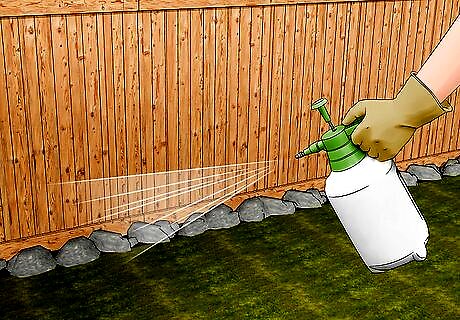
Insecticides prevent fleas from fully maturing and getting inside. An IGR like pyriproxyfen works best to control flea problems. Dilute the insecticide with water following the mixing instructions on the package and load it into a hand sprayer. Instead of spraying your entire yard, targeting areas where your pet likes to go, as well as along fences, under decks, and next to your home’s foundation, should do the trick. IGRs work to get rid of and prevent fleas for up to 6 months.
Call an exterminator for a heavy infestation.
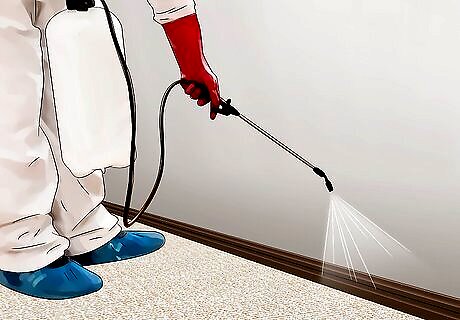
Get an expert on the scene if you can’t get rid of fleas on your own. If you’re having trouble managing the fleas in your home, reach out to a professional service. They’ll be able to determine the size and source of your flea problem and use some more intense chemicals to help get rid of them.




















Comments
0 comment